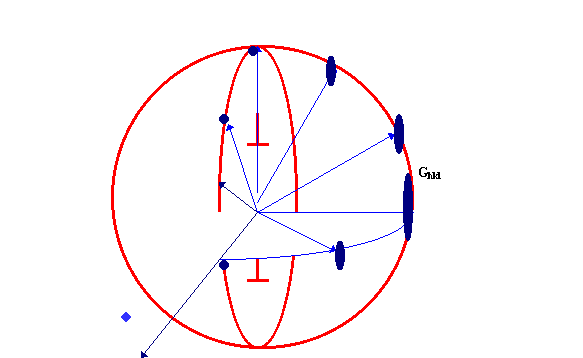
ANISOTROPY OF X-RAY AND NEUTRON SCATTERING BY CRYSTALS WITH DISLOCATION WALLS
R.I. Barabash, P. Klimanek
1National Technical University of
Ukraine, pr. Pobedy 37, Kiev 56, Ukraine
2Bergakademie, Freiberg,Germany
Keywords: X-ray , neutron scattering,
dislocations, rotations, intensity
The existence of dislocation walls changes the conditions for scattering. If dislocations are regularly arranged inside dislocation wall they create a displacement field the same as a single defect with rotation field w. The stresses cause by such defect decrease exponentially with the distance from the wall. If dislocation ensemble contains only dislocation walls it results only in the appearance of local rotation fields in the crystal. There will be no strains between them connected with translatoric part of displacement field. If probabilities for dislocation walls with opposite rotation angles are equal in the crystal the X-ray and neutron scattering will become essentially anisotropic in different directions of reciprocal lattice space. In the direction parallel to the reciprocal lattice vector G corresponding to the exact position of diffraction maximum it will be the same as for randomly distributed dislocations. In the perpendicular direction it will be much more wide. Computer modeling was fulfilled for the case of one and two systems of dislocation walls. In the case of one dislocation wall the width of the reflection depends on the angle between the directions of rotation axis created by each wall and vector G and on the angle between Burgers vector b and G. So that one system of dislocation walls results in the rod like intensity distribution along the direction perpendicular to the plane containing G and w. Maximal broadening will occur for the reflections perpendicular to w (Fig.1). Two and more systems of dislocation walls result in the disk shape intensity distribution in the azimuth plane being much larger then that in the direction parallel to G.
Fig.1 Azimuth width of reflections with different orientation relatively dislocation wall. Ghkl
